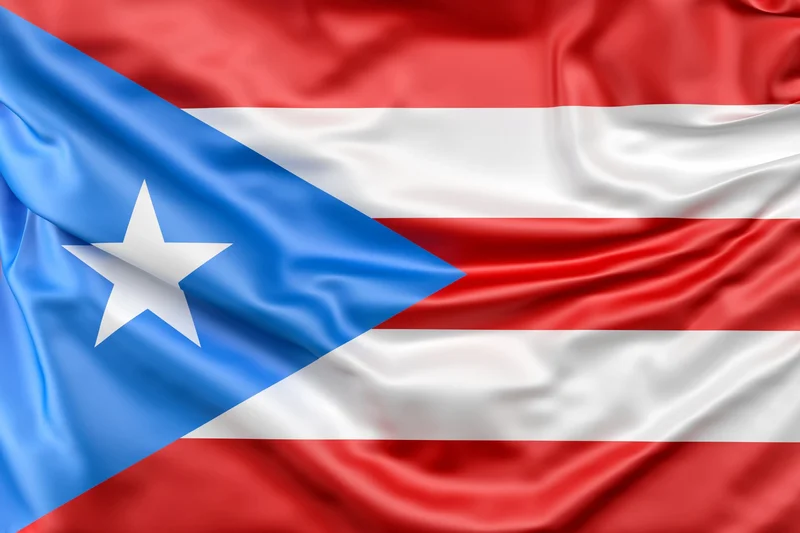Puerto Rico's Solar Power Breakthrough: What This Legal Victory Means for the Future of Energy
I honestly had to sit back and read the headlines twice this week. On one hand, you have the Pentagon releasing these stunning, almost cinematic images of F-35B Lightning IIs—the absolute apex of centralized, 20th-century power—thundering onto the tarmac in Puerto Rico. And on the other, a quiet but earth-shattering federal court ruling that orders FEMA to fundamentally rethink how it powers that very same island, pushing it toward a decentralized, resilient, solar-powered future.
This isn't just a coincidence. This is a collision.
What we're witnessing in Puerto Rico isn't just a series of unrelated news events. We are watching a live-action beta test for the future of America itself. On this one island, two profoundly different visions for the 21st century are clashing in real-time. It’s the old world of top-down, brute-force solutions versus a new world of ground-up, networked resilience. And the outcome of this contest will tell us more about our own future than a thousand policy papers ever could.
The Ghost of Power Past
Let’s start with the jets. You have to admit, the spectacle is incredible. Ten Marine Corps F-35Bs, their unit markings mysteriously scrubbed for "operational security," lined up under the Caribbean sun. They are part of a massive buildup of military hardware—we're talking destroyers, a nuclear submarine, and even the Ocean Trader, a shadowy special operations mothership that sounds like something straight out of a techno-thriller. The official line is "counter-narcotics," but the unspoken message, aimed squarely at Venezuela's Nicolas Maduro, is crystal clear. F-35s Deployed To Puerto Rico Showcased In First Official Images (Updated)
This is the very definition of centralized power. It's the idea that you can solve a complex geopolitical problem by concentrating an overwhelming amount of physical force in one place. It’s a stunning display of engineering and logistics, the kind of thing that makes you marvel at human ingenuity—and the sheer scale of it is just staggering, it means an entire amphibious readiness group with thousands of personnel and the most advanced combat aircraft on Earth are all focused on one tiny corner of the globe.
But is this model of power truly suited for the challenges we face today? Deploying a multi-billion-dollar stealth fighter to chase drug smugglers feels like using a sledgehammer to perform surgery. It’s a powerful reflex, a muscle memory from a century of global conflicts. The question we have to ask ourselves is: does projecting this kind of strength actually build lasting security, or does it just perpetuate a cycle of threats and responses? What happens when the jets go home?
The Seed of a Different Future
Just as those F-35s were being loaded with live missiles, a federal judge in San Juan delivered a decision that represents a completely different philosophy of power. The court ruled that FEMA can’t just use billions in post-hurricane disaster funds to rebuild Puerto Rico’s old, decrepit, fossil-fuel-based electrical grid. Instead, it must seriously consider distributed renewable energy. Legal Victory: FEMA Must Consider Rooftop Solar for Puerto Rico’s Ailing Grid

Let me translate that from legal-speak. Distributed renewable energy—in simpler terms, it means rooftop solar panels and battery storage for homes, businesses, and communities. It’s a grid with no single point of failure. It’s a network, not a monolith. When I first saw that ruling, I felt a genuine jolt of optimism, because this is the blueprint for true 21st-century infrastructure.
Think about the paradigm shift here. The old grid is like a mainframe computer from the 1960s: massive, centralized, and incredibly vulnerable. If the main plant goes down, everyone goes dark, as Puerto Ricans know all too well. A distributed solar grid is like the internet. It’s a resilient web of interconnected nodes. If one house gets knocked offline, the rest of the network keeps humming. It’s power for the people, by the people. This court decision isn't just about clean energy; it's about democratizing the most essential resource of modern life. It’s about building a future that can withstand the storm, both literally and figuratively.
This is the kind of breakthrough that reminds me why I got into this field in the first place. It’s not just about the tech; it’s about the human impact. We have a once-in-a-generation chance to build something better, not just for Puerto Rico, but as a model for the world. Of course, with this opportunity comes a profound responsibility to ensure this new energy landscape is equitable and benefits the communities who have suffered the most, not just corporations looking for a new market.
The Glitch in the System
So you have these two massive forces—the centralized military and the decentralized energy grid—vying for the soul of the island. And then, a seemingly trivial pop culture moment reveals the human friction at the heart of it all. Conservative pundit Tomi Lahren gets publicly corrected on her own show for declaring that Puerto Rican superstar Bad Bunny is "not an American artist."
It’s easy to laugh it off, but don’t miss the deeper meaning. This isn't just a gaffe; it's a symptom of an outdated worldview. The attempt to draw a hard line around who is and isn't "American" is a product of the same binary, centralized thinking that builds fragile power grids and sees fighter jets as the primary tool of foreign policy.
Bad Bunny, a global phenomenon who creates art that transcends borders, represents the messy, interconnected, and fluid reality of the modern world. The world of networks, not hierarchies. The inability of some to even comprehend that a Puerto Rican is an American citizen shows just how deep the old paradigm runs. It’s a glitch in the system, revealing a fundamental misunderstanding of the very people and places at the center of these grand geopolitical and technological shifts. What does it say about our national strategy if we don’t even understand who we are as a nation?
The Island at the Edge of Tomorrow
Look closer at Puerto Rico, and you’ll see it’s not a footnote in the American story. It’s the prologue to our collective future. The island has become an unwilling laboratory where two futures are being tested. One is a future of centralized control, of walls and weapons, a brittle system that looks powerful but can shatter in an instant. The other is a future of distributed resilience, of networks and communities, a flexible system designed to bend, not break. The choice being forged there, between the fighter jet and the solar panel, is the choice we all have to make.
-

Warren Buffett's OXY Stock Play: The Latest Drama, Buffett's Angle, and Why You Shouldn't Believe the Hype
Solet'sgetthisstraight.Occide...
-

The Great Up-Leveling: What's Happening Now and How We Step Up
Haveyoueverfeltlikeyou'redri...
-

The Business of Plasma Donation: How the Process Works and Who the Key Players Are
Theterm"plasma"suffersfromas...
-

Zcash's Zombie Rally: The Price Prediction vs. What Reddit Is Saying
So,Zcashismovingagain.Mytime...
-

NJ's ANCHOR Program: A Blueprint for Tax Relief, Your 2024 Payment, and What Comes Next
NewJersey'sANCHORProgramIsn't...
- Search
- Recently Published
-
- The Fight for Solar Incentives: What's Really at Stake and Why It's Our Biggest Opportunity Yet
- Scott Bessent's 'Price Floor' Plan for China: What We Know and Why It's Pure Insanity
- Salesforce (CRM) Stock Surges on $60B Revenue Target: What the Forecast Means and If the Numbers Add Up
- The SMR Stock Gold Rush: What's Behind the Army Deal Hype and Is It All Just Hot Air?
- United Airlines Stock Drops on Mixed Q3 Results: Analyzing the Earnings Beat and Revenue Shortfall
- COOT Stock's Breakthrough Surge: Why It's Happening and What It Means for Our Future
- Tech Giants' $40B Aligned Data Centers Acquisition: Why This Is a Turning Point for AI's Future
- Turkey's "Steel Dome" Defense System: What It Is and Why It's a Game-Changer
- Mantra: A Quantitative Look at the Psychology and Actual Impact
- Nasdaq Index: Performance, Key Drivers, and Future Outlook
- Tag list
-
- Blockchain (11)
- Decentralization (5)
- Smart Contracts (4)
- Cryptocurrency (26)
- DeFi (5)
- Bitcoin (29)
- Trump (5)
- Ethereum (8)
- Pudgy Penguins (5)
- NFT (5)
- Solana (5)
- cryptocurrency (6)
- XRP (3)
- Airdrop (3)
- MicroStrategy (3)
- Stablecoin (3)
- Digital Assets (3)
- PENGU (3)
- Plasma (5)
- Zcash (5)
- Aster (4)
- investment advisor (4)
- crypto exchange binance (3)
- SX Network (3)
- solar incentives (3)
